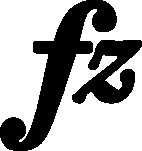



Articulation, Accents, Hairpins
|
b. 302-304
|
composition: Op. 49, Fantaisie in F minor
..
According to us, the short accents in bar 302 and 304 resulted from the inaccuracy of the A notation (→GE), hence in the main text we suggest long accents, as in the preceding phrase. In EE2 the accents were added on the basis of GE1. category imprint: Differences between sources; Editorial revisions issues: Long accents , EE revisions |
|||||||||||||
|
b. 302-309
|
composition: Op. 49, Fantaisie in F minor
..
Chopin added the multi-bar cresc. - - indication – along with a number of other indications in this fragment – to A after [FC] had been finished, which explains its absence in FE (→EE1). In the very FE (or earlier in [FC]) there is only the category imprint: Graphic ambiguousness; Differences between sources; Corrections & alterations issues: EE revisions , Corrections in A , GE revisions , Authentic corrections of FE , Inaccuracies in A |
|||||||||||||
|
b. 310
|
composition: Op. 49, Fantaisie in F minor
..
The staccato marks for the right and the left hands were probably added by Chopin to A later (after [FC] had been finished), like many other indications in this fragment. In GE the wedge over the R.H. chord was considered a carelessly written dot, which is very frequent in the B & H editions. category imprint: Differences between sources issues: Inaccuracies in GE , Wedges |
|||||||||||||
|
b. 311-315
|
composition: Op. 49, Fantaisie in F minor
..
In bar 311, 313 and 315 the A accents clearly differ in terms of their length and – despite certain inaccuracies – certainly concern the L.H. At the same time, the mark in the 2nd half of bar 311 reaches the quaver, hence, when interpreted literally, it looks like a category imprint: Graphic ambiguousness; Differences between sources issues: Long accents , Inaccuracies in FE , Scope of dynamic hairpins , GE revisions |
|||||||||||||
|
b. 312
|
composition: Op. 49, Fantaisie in F minor
..
The accent in bar 312 could have been added to A after [FC] had been finished, which is indicated by it having been placed differently than the accent in bar 314 (under and not over the octave). The type of accents can give rise to doubts, since they are slightly longer than those at the beginning of bar 311, 313 and 315. The musical context suggests that all five marks should be considered equally (they concern crotchets separated by rests), which is confirmed by the unquestionable long accents in the middle of bar 313 and 315, clearly longer than all the remaining ones. In GE the two discussed accents were reproduced as long, while in FE (→EE1) the only mark in this edition in bar 314 – as short. In EE2 both accents are short – the former on the basis of FE2, while the latter – inaccurately repeated after GE1. category imprint: Graphic ambiguousness; Differences between sources issues: Long accents , EE revisions , Placement of markings , GE revisions |







 in b. 309 in
in b. 309 in 

 and
and  in bar 310.
in bar 310. 
 in
in 




